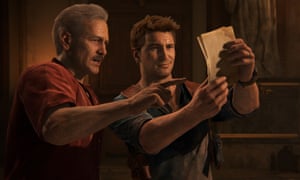There’s a question at the heart of the Uncharted games that the latest title, released to great acclaim this month, tackles most directly: is the dashing lead protagonist, Nathan Drake, a hero or a thief?

The continuing success of Naughty Dog’s action-adventure series, along with the resurgent Tomb Raider games, shows that the “adventuring archaeologist” trope is a resilient one. The modern precursor of both Nathan Drake and Lara Croft is of course Indiana Jones, who retains a vice-like grip over the public imagination.
But Jones represents an archetype that stretches back much further, of course; his true inspiration can be traced beyond the 1950s movie matinee serials and pulp comics that inspired George Lucas and Steven Spielberg, and toward the great colonial fantasies of King Solomon’s Mines, The Lost World and the Boy’s Own magazines. There are even older precedents: Egyptian literature from the first century CE introduces Setna – a prince who raids tombs in search of a magical book.
What’s interesting is that these characters continue to flourish in a culture that is becoming increasingly sceptical towards the idea of acquiring and retaining cultural artefacts from overseas. This is a time in which the British Museum is under constant pressure from Greece’s culture minister to return the Parthenon marbles to their country of origin. This debate has raged for decades, with the name “Lord Elgin” is now all but synonymous with idea of cultural imperialism.
This battle is just one facet of a complex discussion surrounding the removal of ancient artefacts from countries which are often politically or economically vulnerable to exploitation. The Native American Zuni tribe have been extremely vocal in their calls for the return of sacred objects from both European and South American collections. Many large institutions such as New York’s Metropolitan Museum and the Pushkin Museum in Russia are under increasing pressure to repatriate some of their greatest treasures.
Many of us are sensitive to the case put forward by countries that have seen their treasures dispersed around the globe; but while playing Uncharted or Tomb Raider, we’ll spend hours of our free time engaged in the process of removing valuable cultural artefacts from their native homes. We’ll happily lose ourselves in the wonderful escapism – the exotic locations, the intriguing mythologies – with little thought as to what it means to inhabit these characters, and to be made complicit in their actions.
Nathan Drake is, like Lord Elgin before him, a man with a soft spot for grand and exotic statues. In the first Uncharted game, players are asked to help him locate a solid gold Inca statue connected to the El Dorado folktale. While Drake demonstrates that he is knowledgeable about Southern American cultures, many of his actions throughout the game indicate difficulties translating this knowledge into respect. Nathan Drake is a strange sort of archaeologist – one who has very few qualms about letting loose a rocket-propelled grenade inside an ancient temple.

No hay comentarios:
Publicar un comentario